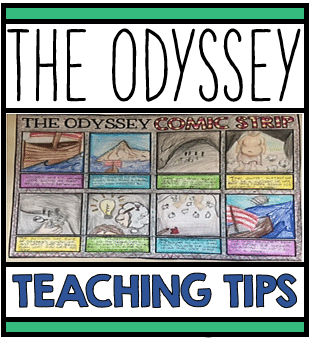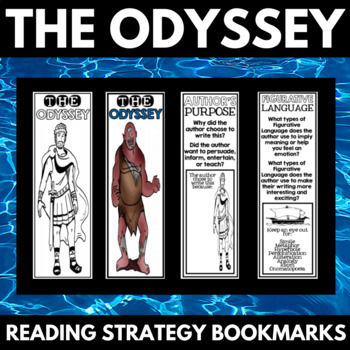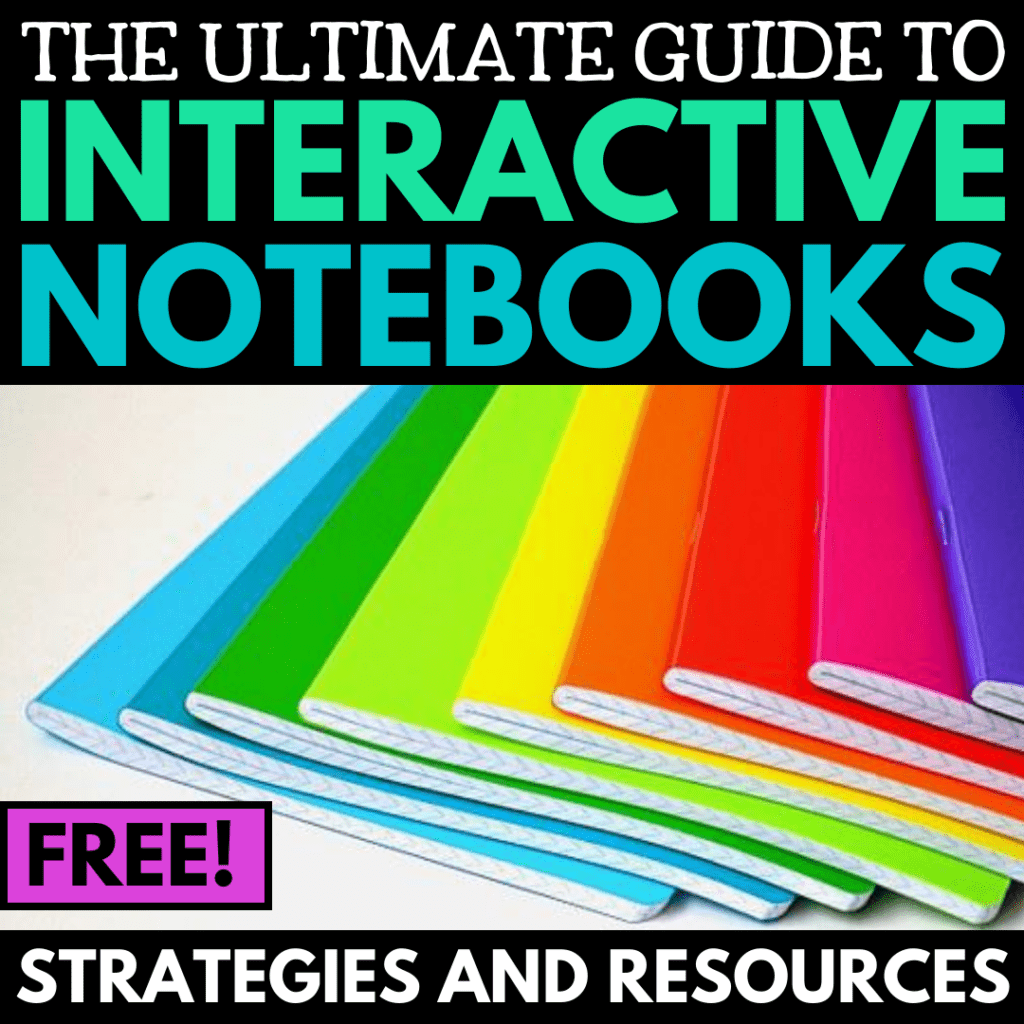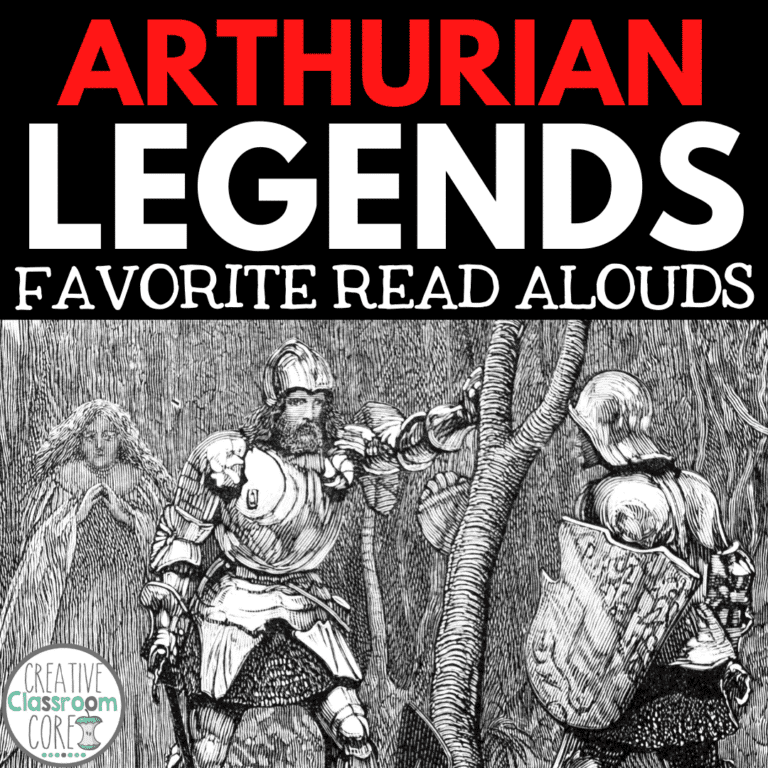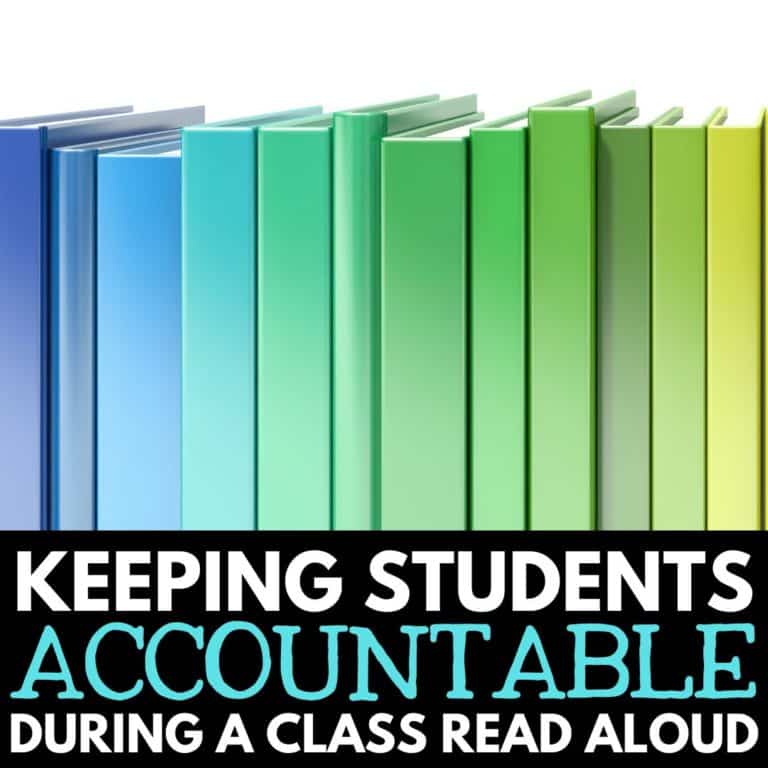Interactive Notebooks: The Odyssey
By MARISSA DESPINS Updated April 09, 2024
Welcome back to another post in my series on Interactive Notebooks! Today I want to talk all about my favorite novel study of all time – The Odyssey. Greek Mythology always gets the kids excited, and I absolutely love teaching it.
Looking for some no prep resources to help you teach all about Ancient Greece? I have a wide variety of different Ancient history resources available in my TPT shop – see them all by clicking on the image or button below!
(This post contain affiliate links which means I make a small commission if you make a purchase, at no additional cost to you. Thank you for your support!)
All about The Odyssey
The epic tale that is The Odyssey follows the long-winded journey of Odysseus the war hero. On his way home from the Trojan War, he lets his pride get in the way and tempts the gods. This causes chaos to reign down upon his travels home. As he attempts to make it home to his wife and son, he encounters a seemingly endless array of obstacles. These include a hungry cyclops, singing sirens, many armed sea monsters, and threats from the underworld. All of this makes for entertaining reading for even the most reluctant learner.
What version of The Odyssey should I use with my Learners?
There are a lot of different retellings of the epic tale available. I am a big fan of the version by Robin Lister. The writing is beautiful. It also has fun illustrations throughout the novel. She captures the essence of the story, and makes it accessible to middle school readers. I’ve taught this novel for 10 plus years now. It is always thoroughly enjoyed by my students. I highly recommend the novel for upper elementary and middle school students.
Introducing your Odyssey unit
As a pre-reading activity to get the kids excited about the book, I usually show them some of the Odyssey themed artwork done by John Waterhouse. He has some amazing pictures of characters and events from the epic.
I choose a few images and put them on the classroom screen. Next, I have the kids try and predict what is going on in the picture. It is a fun pre-reading activity, and helps to build anticipation. If you are interested in checking out some of Waterhouse’s work, click here. My favorite image is his picture of Circe and the “animals” – haunting!
Crash Course Literature has a great YouTube video all about the Odyssey. However, it does have some spoilers, so you may only want to watch pieces of it as you make your way through the text. Alternately, you can watch it as review at the end of the unit.
Spark Notes also makes some great Odyssey videos on YouTube. Again, these are best to use in small chunks to review each section, or as a big review at the end of the novel – otherwise there are lots of spoilers.
Characters in The Odyssey
There are a lot of different characters and settings in The Odyssey, so before we dive into the story, we take some time learning about each of them. With all of the different Greek names, it can be easy for students to get confused. Because of this, I have the kids write down some notes on each of the characters and settings in the novel.
When they are done, I have them glue these pages into the front of their Odyssey Interactive Notebook, to refer back to whenever they get confused. I have found that the kids get quite attached to their notebooks, and like to spend extra time at home to decorate the pages (which makes me happy!) I find these pages really come in handy around quiz or test time, as the kids have something to refer back to and help them study.
For additional information about teaching character, check out our character analysis ideas and tips for understanding character traits!
Qualities of the Epic Hero
When discussing Greek Mythology, the idea of the “Epic Hero” often comes up in my English classroom. Odysseus truly embodies the idea of the Greek Hero (even with his flaws), so it is a good time to discuss what it means to be a hero. In order to ensure that we are all using common language when we discuss the concept of the Epic Hero, I like to go over the specific qualities that Epic Heroes possess.
Noble Birth: The hero is typically a King, Prince, Demigod, or someone of high rank within their culture.
Supernatural Abilities or Qualities: The hero possesses qualities of greatness, such as bravery, cunning, humility, or wisdom.
Vast Traveler: The hero’s travels take him to exotic or supernatural locations, often to battle against evil.
Unmatched Warrior: The hero is a great warrior, in some capacity.
Cultural Legend: The hero is well known in his own culture, before going out on his quest.
Humility: A true hero completes heroic actions for their own sake. Heroes that choose to boast are often punished and humbled.
Battle Supernatural Forces: The hero faces supernatural beings of some sort.
Epic Heroes in Popular Culture
Once we establish a common framework to examine Epic Heroes more closely, I have the kids discuss in small groups some of the Epic Heroes they can think of from movies and TV. Characters like Harry Potter and Luke Skywalker are great examples.
Symbol Development
After discussion, I have the kids come up with symbols to represent each of the Epic Hero qualities. I find that asking students to create a visual of the concept really helps the kids to remember the qualities.
When they are done, I have the kids glue them into their Interactive Notebooks. While we read through the novel, I have the kids discuss and write about the different ways Odysseus shows these Epic Hero qualities.
Cyclops Comic Strips
I have taught this novel for over 10 years, and I still don’t get tired of hearing my students react to the Cyclops scene. It is just the right amount of gruesome to really appeal to 7th graders!
Because engagement is naturally high with the scene, I take advantage of that and have the kids create a comic strip summary of what it going on. The kids love to create their own comics, and don’t even seem to notice that they are practicing their summarizing skills.
For additional information about Greek Monsters, check out our post on mythical allusions!
Do you teach this novel with your upper elementary or middle school kids? I would love to hear about some of the fun activities you do with it!!! Let me know in the comment section below!
Interested in trying this Odyssey unit out in your classroom?
If you are interested in doing a similar unit, you can pick up a copy of all of the resources I used here, as well as a bunch of other fun activities (including my Odyssey High School Yearbook activity!) by visiting my teachers pay teachers store, or clicking on the image below.
Looking for some free resources to use along with the novel?
Click on the image below for a FREE DOWNLOAD of Reading Strategy Bookmarks to use alongside your next Odyssey unit! I hope you can make great use of them in your classroom!
Interested in more FREE resources for Interactive Notebooks?
Click on the image below for a FREE download of some of my best selling resources for Interactive Notebooks! This download contains fun foldables, graphic organizers, and other resources to help get you started with using Interactive Notebooks in your classroom today!
Looking for more information on Interactive Notebooks?
Click on the links below to go directly to my previous posts on Interactive Notebooks.
What are Interactive Notebooks?
What are the Benefits of using Interactive Notebooks in your classroom?
Tips and Tricks for Interactive Notebooks
Teaching about Mesopotamia using Interactive Notebooks
Teaching about Ancient Greece using Interactive Notebooks
Interested in signing up for my email list?
If you are interested in signing up for my email list, you can do so by clicking on the link below. I periodically send out emails with free resources, teaching tips, and exclusive deals. Signing up will also give you immediate access to some of my best selling Interactive Notebook resources – foldable projects, graphic organizers, and other fun activities.
